Head of the Demon|Kaamos
2020-06-17
by Niklas Göransson
Long-time underground veteran Konstantin Papavassilou discusses the role Kaamos played in the post-millennium Swedish death metal renaissance, as well as the musical venture this path ultimately led him to – Head of the Demon.
– Following the recording of “Sathanas Trismegistos”, we began working on new material without taking much of a break. As a result, “Deadly Black Doom” grew forth organically during the writing process whereas the previous two were, from the very beginning, pursued as a clear vision we sought to pinpoint. This time, the vision had to chase us instead, which is why it’s also very much a continuation of the second album. I also think “Deadly Black Doom” is much darker than its predecessor – its sound being the most obvious example, but also in the heavier and more aggressive song structures.
With their third album, “Deadly Black Doom”, released by Invictus Productions and The Ajna Offensive on Walpurgisnacht 2020, HEAD OF THE DEMON retain the strange musical hybridisation that distinguished the 2016 “Sathanas Trismegistos”. It’s far from a repetition though, there are several new elements; for example, some songs have more of a rock feel in certain parts.
– Yeah, what you refer to as a ‘rock feel’ is something we’ve worked towards since the very first day, it’s evident on the debut already. It’s not that we wanted to play actual rock; I’m speaking more in terms of arrangements and song structures. I’ve drawn a lot of inspiration from the likes of LED ZEPPELIN, DANZIG, RAINBOW, and KISS, to name a few. I’d like to think that what shines through the most is our complete disregard for genre boundaries. We play whatever we feel like and never cater to any ‘rules’ of this or that style. Another relevant factor is that “Deadly Black Doom” is album number three for us, and many have this special relation to their third; it’s become a pivotal milestone in the lifespan of a band. I had this hanging over me all the way into the studio, until I finally realised that I simply do not care. HEAD OF THE DEMON is a steady stream of inspiration that’s constant, so I don’t have to pay any heed to such notions – they’re just another set of rules and expectations, which is precisely what we oppose. Actually, it’s our creativity and inspiration which work against it. That’s the sole purpose of “Deadly Black Doom”, to delve even deeper into ourselves and our creativity… pushing ever further, peeling off all the layers hindering us from reaching the very essence of HEAD OF THE DEMON – where heightened consciousness and creative madness come together in the making of something larger than life.
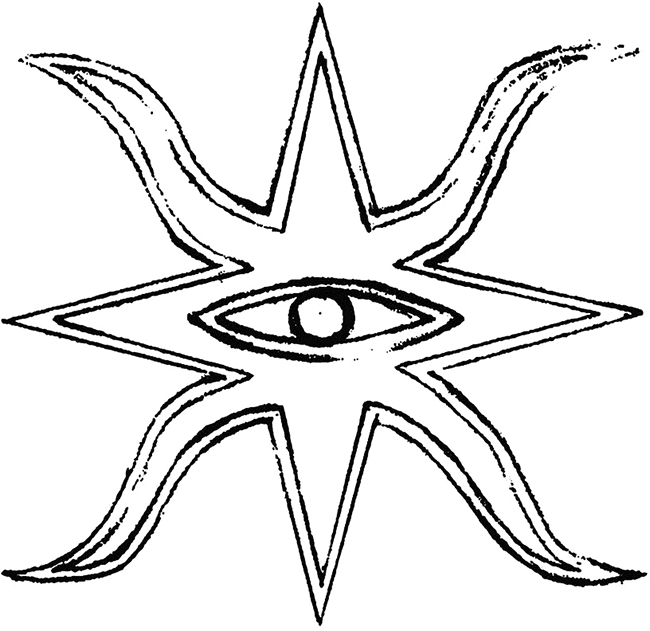
2012, 2016, 2020 – these four-year gaps between albums, was this by design or just an organic development?
– It just turned out that way naturally, though it’s quite revealing of our creative process and its cyclical nature. Someone else asked me if it was intentional to have six songs per release, thus outlining 666 with the third album. Honestly, I hadn’t even reflected over this fact and became aware only after he pointed it out. But, yeah, that’s another example of the subconsciousness revealing itself unto us through our creative process. Who knows, one day we might write riffs or song structures based on Fibonacci numbers…
The recording of “Deadly Black Doom” was divided between two studios, Top Sound in Stockholm – the one they used for “Sathanas Trismegistos” – and Sundsvall’s Nevo Studios. Sundsvall is about 375 kilometres (233 miles) north of Stockholm, so I’m wondering what the allure was up there.
– We wanted to keep recording live and in analogue, but the tape recorder that used to be at Top Sound had been sold to Nevo. We managed to solve this problem by simply hiring the studio and bringing along our engineer, King Kalle, on what was almost like a road trip. Upon arrival, we noticed that the studio was huge; it had actually belonged to Swedish Radio until recently, when it was sold to the people who’d been working there as producers and engineers. Since the building was constructed for music, and sound broadcasting in particular, everything was in place to not only play and record live but also to do so in a huge room with great acoustics.
This move certainly appears to have paid off. The drum sound in particular is excellent, with a highly satisfying organic depth and power.
– For the music nerds out there: the studio even had plate reverb that we ended up using throughout the entire recording process. I guess this, for now at least, is the closest we’ll get to something comparable to a BBC live recording. We tracked all songs live over the course of a weekend and then brought the material back home to Top Sound, where our engineer is based, and continued with the vocals as well as mixing and mastering. A very good experience, for sure. I strongly urge people to listen both to this one and our previous albums through headphones… there’s a lot going on, details hidden way out in the shadows – yet still there, lurking.
You also mentioned some manner of amp destruction?
– Haha! Yeah, both mine and Johannes’ guitar amps died during the recording sessions. We remain lost in the dark regarding the cause and reason for this, but dead they are and currently awaiting resuscitation. We managed to solve the problem rather quickly though, since there were plenty of amps in the studio. Unexplained stuff like that happening is always an omen of some kind, whether it’s a good or a bad one remains to be seen. It just adds to the ‘weird’ stuff that happens whenever we undertake pivotal stuff.
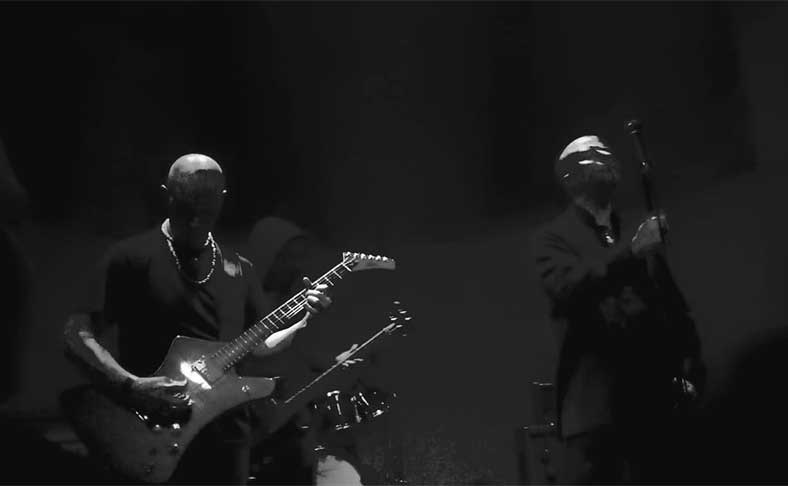
The lyrics were a refreshing read, in that they are direct and to the point in both sentiment and message – rather than being shrouded in a veil of nonsensical drivel.
– We choose our words carefully, which – as you once pointed out – often results in ‘lyrics that would fit on a postcard’. When writing lyrics, one will either seek to elaborate or obfuscate; the latter alternative might be a good way of masking one’s inadequacies, but typically makes for an entertaining read to anyone with a rudimentary understanding of the subject matter. One truly has to marvel at the extents certain people are willing to go in finding elaborate concepts, extravagant outfits, and a scene decor which probably took more time and effort than writing the actual material. In the end, one can always boil it down to, ‘What is he trying to say?’ If the reader doesn’t get it, it’s most probably the writer’s fault.
In this context, it’s interesting to note that most contributors to HEAD OF THE DEMON have many years of documented esoteric work behind them. Come to think of, I can’t off the top of my head think of any other contemporary metal band with such a high concentration of practicing occultists.
– I’ve never really thought about that, but you might actually have a point. Some of us have shared much diligent work in the occult field between us so, yeah, as friends of old we also have different aspects of our life and interests that intersect. Much of what we do, both as a band and in other contexts, is understood rather than communicated. In HEAD OF THE DEMON, our focus is to create a musical vision of the idea rather than trying to translate and depict it through words. I think a lot of power comes from our mutual quest for the mysteries, as opposed to some kind of collaborative magical working infused into the band.
Now that HEAD OF THE DEMON have started playing rock music, perhaps it’s a shame that this ‘occult doom rock’ scene that emerged in the wake of THE DEVIL’S BLOOD appears to be trickling out.
– Haha! Occult rock. Few are the ones who adhered to it more than as an ad hoc name for something that barely existed but, nonetheless, garnered a lot of attention. I don’t consider HEAD OF THE DEMON as part of that music category, so I don’t have any problems with it fading away. The movement itself was nothing we ever felt part of, but its short lifespan did admittedly generate a few interesting albums and artists… which, in the end, are but a handful compared to the amounts of bands the subgenre spit out. It had great potential up to the point where one is forced to compromise with one’s art and integrity, thus sacrificing both for the now oh so famous fifteen minutes of shame.
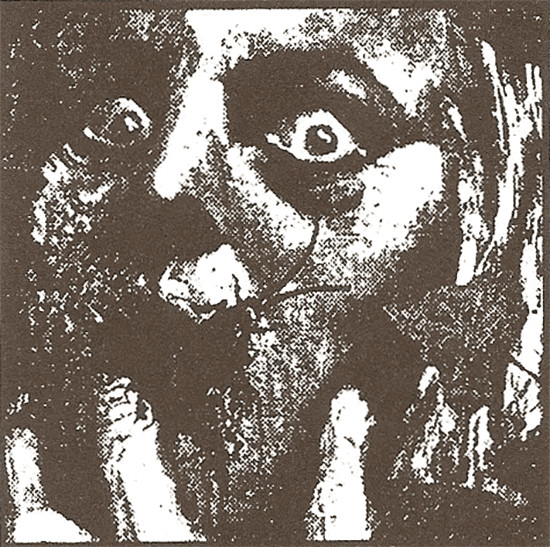
In 1998, after the disbanding of A MIND CONFUSED, Konstantin formed a death metal band called KAAMOS. Also present in the line-up was current HEAD OF THE DEMON drummer Thomas Åberg, with whom Konstantin has played in various projects since the early 90s. January 1999 saw the release of KAAMOS’ “Promo 1999” tape and then, the month after, a self-titled seven-inch released by Swedish death metal connoisseur label Dauthus. Also in February came REPUGNANT‘s “Spawn of Pure Malevolence” demo, followed in June by REVOKATION’s “Reincarnated Souls of Hell” – two Stockholm bands who, along with KAAMOS, were part of a new and eventually rather influential wave of death metal. In a recent private conversation about precisely this, Darragh from Invictus Productions made a pertinent observation in that the members constituting the bands of this revival were all genuine metalheads who grew up listening to the 80s and early 90s classics. Meanwhile, most of the early guard of especially Swedish death metal bands had turned into ‘artists’ and started moving away from not only the style they became known for, but metal in general.
– Yes exactly! At the time, death metal was thoroughly infested both by the Gothenburg scene as well as various rock’n’roll leanings of certain earlier bands. The genre had become so watered down that there was nothing but melody and rock music left. Meanwhile, black metal had morphed into your average wet dream for teen-goth-erotic-vampire-romanticism. Of course, there were still bands who hadn’t fallen to this development, but they were as few as they were marginalised in a scene that carried their name. No danger, no darkness, no evil. We felt an urgent need to re-inject this into the genre – all the things that appealed to us so strongly in teenage years… nightmarish dreams of being baptised by the Devil in the blood of innocents as the world burns; death and plagues roam free, mothers cry, and children suffer. The genre was simply lacking in what it was all about: DEATH!
In his book Swedish Death Metal, Daniel Ekeroth made an interesting observation: ‘KAAMOS take themselves dead seriously, so they are actually more connected spiritually to early 90s black metal than late 80s death metal.’
– The cycle up to then had consisted first of death metal and then, following its early 90s deterioration, black metal emerging initially as a revolt but soon becoming equally watered down itself. Despite the death and black metal scenes having been ‘enemies’ of old, when it came to the re-emergence, or revitalising, the genres were closer than for many years, most probably because we found kindred minds and spirits fighting for the same cause. This is why KAAMOS wouldn’t hesitate to do mini-tours and gigs together with a band like WATAIN. The only difference between the two subgenres was style-wise; not on a philosophical or existential level, since our mutual father is Satan.
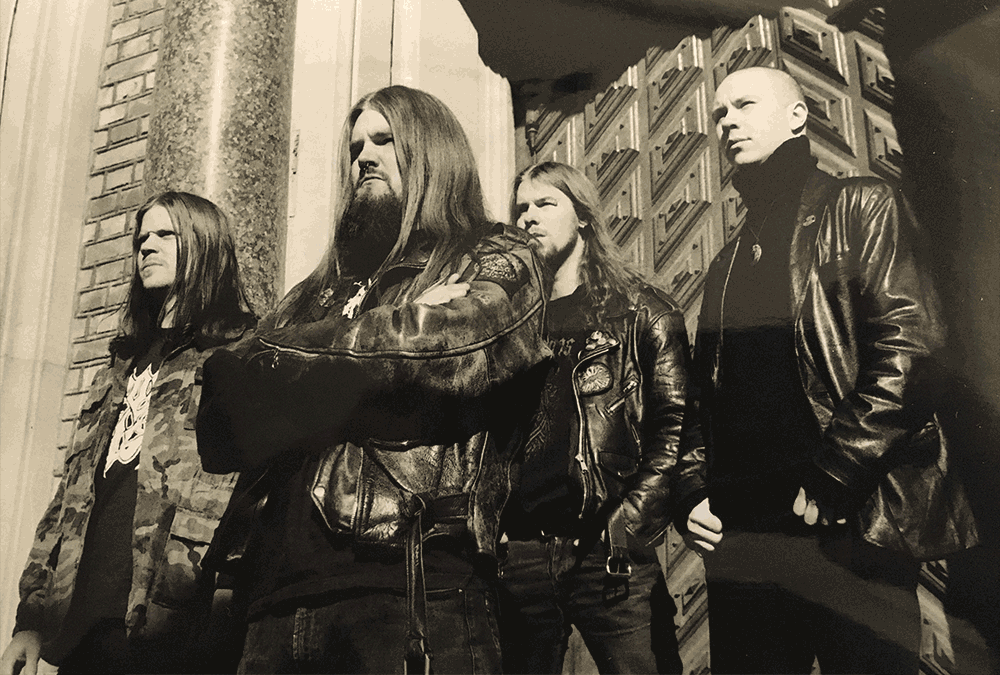
At the time, around the millennium shift, death metal wasn’t exactly the most underground cred-boosting affiliation to have in the Swedish capital. Note that this was before bands like NECROS CHRISTOS and TEITANBLOOD even began playing. However, there were a few stubborn stalwarts who held out.
– It was a constant struggle and an up-hill walk in all areas. To start with, just saying you played DEATH metal would make other metalheads smirk at you, as if you were a relic from something hopelessly outdated. But once it was made clear that we were dead serious, they dropped the smile. Whatever you wanted to do – demo distribution, record deals, gigs, interviews, you name it – it was always a battle, ‘cause no one was interested. Death metal was entirely out of fashion. It was dead silent in Stockholm, at least compared to how it had been earlier on, so we went to gigs in other towns. If you actually managed to set anything up locally, it was another struggle just to see things through. Most venues refused to host death metal bands due to the undesirable crowds. They made plenty of money from beer sales but, as one promoter pointed out, it was all spent on paying for the damages. Before one gig we were asked to promise the same promoter that there would be no hassles, which we did. Come end of the evening, someone had apparently destroyed the urinals with steel-capped boots; back to square one. So, you see, constant struggle and total energy-depletion to even move an inch.
I imagine all this would’ve made those involved into a tight-knit community?
– Yes, we met a lot of interesting and dedicated people we became friends with; back then, it was still primarily through tape-trading and ordering demos and seven-inches. These were individuals who, like us, burned for this music and felt an urge to revitalise and remould it to what it was all about. And perhaps of foremost importance was the ardent passion and ‘Fuck off!’ attitude upheld by those who refused to let anything get in their way. It was a crystallising process that gained momentum through the constant hard work of like-minded bands and people until, eventually, it came to the point where death metal once again dealt with darkness, evil, and death.
In early 2001, two years after the first tape, KAAMOS self-released their “Curse of Aeons” demo. Whereas their initial effort was more of an acquired taste, this one had a far greater impact.
– “Curse of Aeons” opened up a lot of opportunities, for sure. We were already receiving offers from labels after our first demo and the seven-inch but, instead of committing to any of the offers, we went ahead and recorded a second demo and it got really good feedback. Offers on all areas increased, with new actors and new proposals. We had several suitors but eventually opted to go with Candlelight; they made the best offer and seemed to fit our attitude – at least in theory. However, despite KAAMOS starting to get recognition here and there, death metal was still something very unpopular.
Were you already performing overseas at this point?
– We didn’t play abroad until the debut album had been released. Our first gig outside Sweden was in Athens, Greece, in March 2003. It coincided with that MORTEM and REPUGNANT gig in Stockholm which never came to be – MORTEM were having a lot of issues with the travelling, if memory serves me. I got a call asking if we could replace them – we were well-rehearsed that week due to the upcoming show in Greece just a few days or so after, so we accepted. Since we were planning on attending the gig either way, the only thing that changed for us was that we spent half the night on stage instead of in front of it. It’s from that evening the KAAMOS and REPUGNANT “Live in Stockholm” tape was recorded.
How did things work with Candlelight?
– The initial period up to the recording of the debut was good, but from there it just went downhill; hard to get a response, and they barely showed any interest at all. We then managed to co-operate for the recording of our second album, “Lucifer Rising” (2005), as they invoked a contract option. I wouldn’t have minded changing label at that point, but my hands were tied by the activation of this option. Once we were done in the studio, they went silent again. Then, prior to completing the material for our third album, we split up. Since we had a few songs written already, we decided to record them – for our own sake. I told Candlelight we’d buried the band and that was the ‘end of story’ with them. Good riddance, as the Brits would say. So, to release the new material we cooperated with Nuclear Winter from Greece as well as Imperium Records, a German label we’d worked with for the vinyl releases. This is what became the 2007 “Scales of Leviathan” EP.
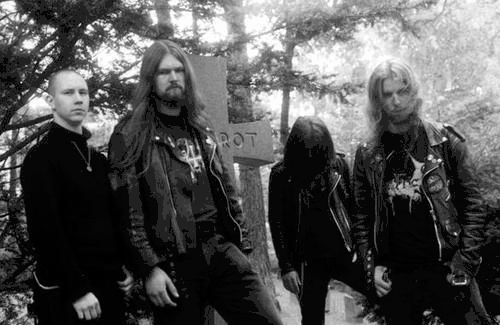
Despite several of the most influential acts having dissolved by then, the movement had been set in motion. A number of new Swedish bands consisting of significantly younger death metal maniacs – like DEGIAL, NECROVATION, and KATALYSATOR, who later became INVIDIOUS – began making their voices heard.
– We noticed that something was happening with the scene about two years or so before we threw in the towel. The ‘swedeath’ term was just around the corner, for better or worse. A younger and newer crowd who were really into the death and black metal underground had started rearing their heads. Most of them were in bands and released cassette demos, had paper fanzines, etcetera… just as it had been before. They also embraced the more totalitarian approach to the genre – no watering down was tolerated – and brought it further than the older generation had even envisioned. Some bands have remained as they were whereas others called it quits. Of course, others have become the exact same thing they once set out to oppose. Probably not with an intact line-up, but still. As always, and as in every genre, I’m reminded of what Nietzsche once stated: if history teaches you one thing, it’s that man does not learn from history.
Are there any currently active bands you think has carried on the same death metal spirit?
– There are plenty of bands carrying the torch KAAMOS helped to reignite, or re-fuel. I think DROWNED from Germany deserve a special mention here, since they’ve been going strong with DEATH metal ever since the 90s. A few newer acts I listen to and believe are ignited by the same fire would be LUCIFERICON, VIRCOLAC, SONNE ADAM, GRAVE MIASMA, DEAD CONGREGATION, INITIATION – the Swedish one, that is – and… of course, THE CURSE, haha!
THE CURSE is a Stockholm-based death metal band featuring former KAAMOS faithfuls Karl Envall and Nicklas Eriksson. The last time we spoke, Konstantin mentioned having material for six or seven new KAAMOS songs – one remains curious if these will ever see the light of day. Surely, there must be at least the occasional death metal craving.
– Hell yes! Even today when I play guitar, I come up with some very cool riffs that would’ve worked wonders in KAAMOS. Honestly, I wouldn’t mind playing in a death metal band, as long as I don’t have to be the driving member who writes all the music. However, the majority of previous offers have been in the capacity of main composer… which I don’t think is very well-thought-through since, if I wrote the songs, it would just sound like KAAMOS, and that’s definitely not something I want. But if it’s a band I like who need me as first and foremost a guitarist, not a songwriter, I’d give it some serious thought. As for the old KAAMOS-material, I’d say chances are zero that we record it. Some riffs here and there have been used by the others for their new bands. Furthermore, it would be too big of a project to pull off to any degree of satisfaction today.



